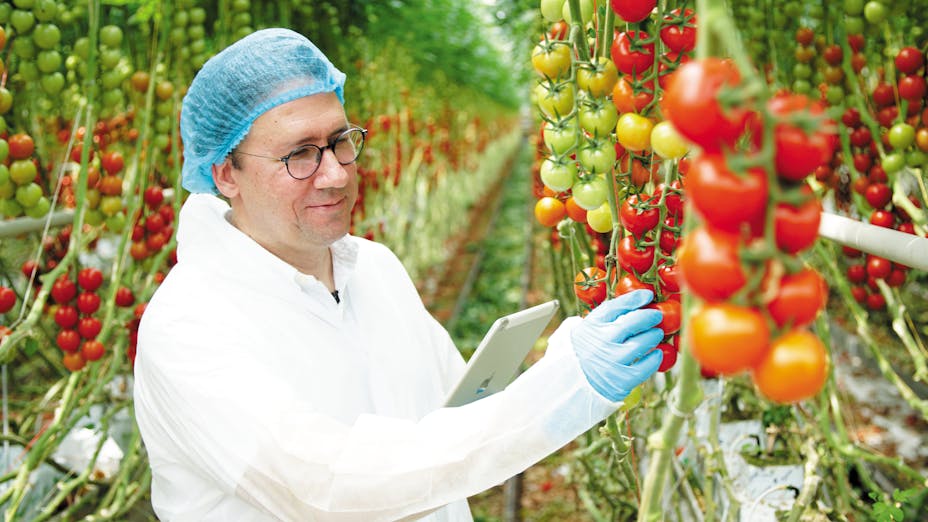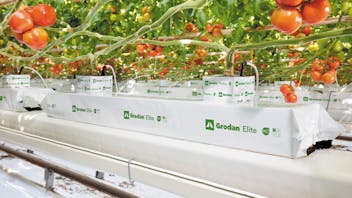How do you contribute to Grodan’s success?
Our aim with the e-Gro platform is to make life easier for growers every day, by helping them to make improvements that will produce a higher yield with fewer inputs – whether natural resources, energy or labour. I use data science and artificial intelligence (AI) to crunch the raw data from the sensors in our customers’ greenhouses all around the world and extract valuable insights so that we can further improve the accuracy of e-Gro. Some people call what I do “magic”, but I prefer to say that, in conjunction with our customers, we’re sowing tomatoes – or peppers, cucumbers or MJ – and harvesting gold! To develop and build the models that provide the insights, I first need to understand growers’ real-life problems and pain points. So my role involves a lot of brainstorming with our green experts and commercial specialists so that we can spot opportunities to add extra value for our customers.
What do you like about working at Grodan?
I really like the fact that my work has a positive impact on many lives – not only for growers and their business success, but also for people who buy and eat the fruit and vegetables or use medicines made from MJ. Against the backdrop of the current megatrends such as urbanization, food security and sustainability, it feels like we’re doing something good for the future of the planet. Besides that, Grodan is a market leader with a very collaborative corporate culture, both nationally and internationally. For example, I was recently involved in an online meeting with two other colleagues, one in Canada and the other in Australia – we didn’t know whether to say ‘Good morning’, ‘Good afternoon’ or Good evening’! Last but not least, I’m pleased that I’m able to put my previous professional experience in banking to good use here for e-Gro. After all, just like financial data, crop data is also a time series – it’s about analysing what happens per week/per day/per minute or even per second. But unlike in the banking industry, where data science is already well established, the horticultural sector is still in an early phase so there’s huge potential for me to make a real difference here.
What do you think many customers don’t know about Grodan?
I think that many of our customers are currently unaware of how innovative and exciting the developments in data science are, and how quickly things are moving. We’re continuously trying to take things one step further, by proactively offering growers tools and insights that they themselves might not yet even realize that they need. Without wanting to get too complex, there are three different levels of analytics: descriptive, predictive and prescriptive. If growers are not currently working with data, the descriptive level of e-Gro is a great place to start. It gives you access to graphs, reports and dashboards about what has happened in the past and what’s going on right now so that you can make comparisons as the basis for more informed decisions. At the second level, the e-Gro Yield Forecaster is a good example of using predictive analytics based on data and AI to show growers what kind of yield they can expect for the coming weeks. But to add even more value for growers, we must not only predict the future, but also make proactive recommendations to help them turn it to their advantage. This is prescriptive analytics, and we’re actually already trialling a number of these products. The aim is to start launching them later this year, so in my view, the best is yet to come!
If you were a grower, what crop would you cultivate and why?
I don’t have green fingers and in the past I’ve only ever grown some beans in cotton as a school experiment. In fact, that’s when I first saw that soil isn’t necessary! But I think I would try to grow something out of the ordinary – something a little more exotic, such as goji berries. They are very healthy and also command a high price, so if I could use data science, machine learning and AI to automate the production process and optimize the use of energy and other resources, then that could be a very profitable venture!

About Gursel Karacor
Gursel Karacor has been at Grodan as a Senior Data Scientist for e-Gro for approximately three years. After completing his BSc, MSc and PhD in Istanbul and Ankara, he worked as a data scientist in Turkey in various domains, from defence to banking. In 2016 he moved to the Netherlands to broaden his horizons and worked for various start-up companies, including in route optimization and mobile gaming. “Then I was approached by a recruitment agency with an interesting project, which turned out to be e-Gro,” says Gursel. “I love working for start-ups but the downside is that they’re fragile and heavily dependent on investors. Working on e-Gro combines a start-up culture with the stability and support of a large, market-leading organization.” Gursel now lives in The Hague. “Even before the pandemic I was mainly working from home, because many members of our development team are based abroad, such as in Poland or Lithuania. I commute to the office in Roermond once or twice a week for meetings with other colleagues such as the e-Gro director, product owner, customer success managers and of course the ‘green experts’ who share valuable insights into the industry and crop cultivation.”








